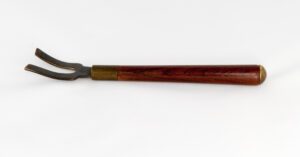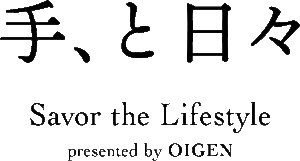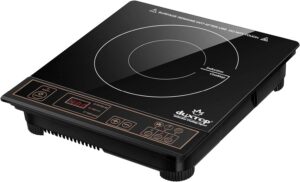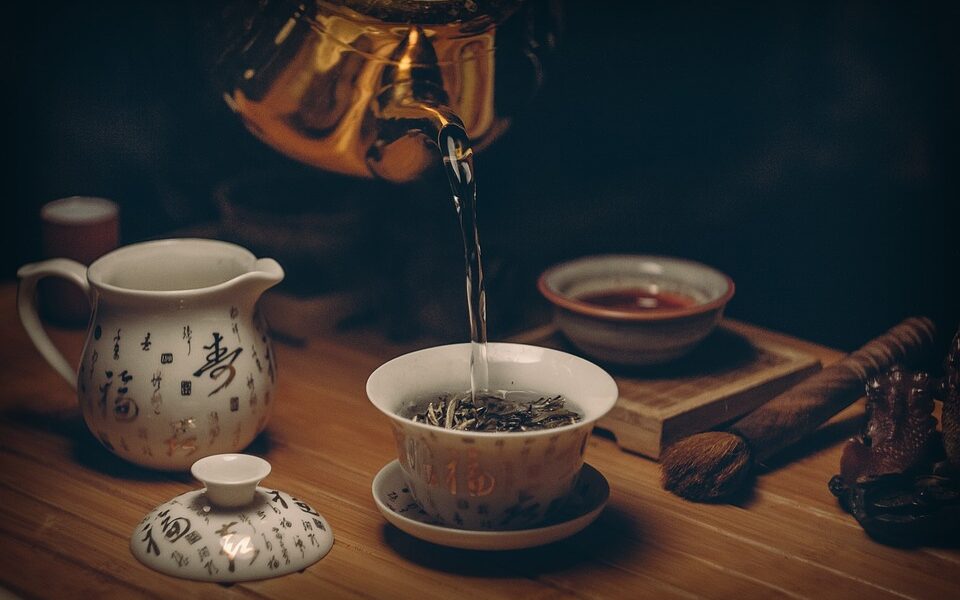
Relax And Don't Stress
Tea Preparation
Tea preparation can, if you aren’t careful, become a stressful experience. As one is learning about different types of tea, you can be overwhelmed by the choices and complexities.
Some common questions are:
-
- What type of water should be used to steep my tea?
-
- What water temperature should I use?
-
- How much water do I use?
-
- How long should I steep the tea?
-
- How many times can I steep this tea?
-
- What vessel should be used for this particular type of tea?
A quick Google search will only add to your stress, as there are many different opinions on the answers to these questions. Relax! This article will attempt to summarize our opinion at Bamboo Mist Tea LLC. We will blend what we have learned over many years of drinking tea and offer subtle differences that may enhance the quality of your tea flavor, smell, and color. Our advice is based on a lot of research, as well as insights gained from tea masters in Asia. It is likely you will discover things here you haven’t heard elsewhere, as some of these insights, like premium artisan teas, don’t leave their respective countries or require translation to make them understood!
Please remember, at the end of the day, the right answer is the one that is right for you. Don’t be afraid to experiment with different steeping temperatures, times, and even vessels. Tea should be a relaxing experience and if you stress out about the water temperature or steeping time, it isn’t a good start.
My Chinese and Japanese care deeply about the tea experience. For example, they care about the peacefulness of the venue, the aroma of the tea, and the beauty of the tea cups. In fact, the cups used to consume tea are small in China in part because it creates many opportunities to serve your guest. The gesture of serving your guest is an important part of the tea experience. This is probably not something we often thing about on this side of the planet. I would encourage you to enjoy our tea in a nice venue over a nice conversation with family or friends.
Please share any insights you glean from your experiences and experiments with our tea community on this blog. While we may know a lot about tea, we are certain that the collective wisdom of the group is always greater than the wisdom of a few individuals. The most important thing is to relax, avoid stress, and experiment until you find what works best for you. Enjoy!.
What water should I use?
WATER CONSIDERATIONS
For premium quality loose leaf tea, water becomes a critical ingredient. While a flavored or cheap tea might mask the water, you will notice a difference between the types of water used for a delicate white tea. The Chinese tea masters will tell you the best water to use with a particular tea is water sourced from the area where the tea is grown. In this way, the tea and water will already be familiar with each other. Of course, this is completely impractical for all of us, who don’t live in China’s tea growing regions.
Our recommendation is you use Spring water, tap water (if you are fortunate enough to have awesome tap water), or to filter your tap water with a Brita filter. If you don’t like drinking your tap water, you aren’t likely to enjoy it in your tea. I have a cabin in the mountain of Oregon, which has the purest water on the planet coming out of the tap. It produces wonderful tea without any filtration. If you too are lucky enough to have a well or pure tap water, try it with a delicate white tea. If you like it, then you are likely good to go with all types of teas.
In Seattle, the tap water tastes horrific. I am not sure why, because if you go to the Seattle.gov website it says “Seattle Public Utilities closely monitors all taste and odor problems reported, in addition to performing flavor profile analyses on a regular basis. Flavor profile analysis uses a group of trained panelists to identify flavors and/or aromas in raw and treated waters.” Really? A group of trained panelists? You would think surrounded by those pristine mountains, we would have delicious water. It is so heavily chlorinated, I feel like I left my mouth open, while diving into the swimming pool. It doesn’t taste good out of the tap and a Brita filter is essential. My first choice in Seattle is Crystal Geyser Spring Water. It seems to be fairly neutral and goes well with all teas. I buy the gallon jugs to try to keep the price down.
Distilled water is best avoided as it will leave the tea tasting bland. Some degree of mineral content in the water will enhance the flavor of the tea and distilled water lacks minerals. The water should be cold or at room temperature. We suggest you don’t use hot water. If you have doubts about these recommendations, I would encourage you to experiment in order to form your opinions on how to make the most flavorful tea at your location.
In many Asian countries, they boil their water in a cast iron teapot. The cast iron will add minerals and flavor to the water. It softens the water making ideal for tea. Even if the teapot is rusty, it won’t harm you and will enhance the tea. The more seasoned the cast iron teapot the better. The water boiled in these cast iron teapots tastes delicious and many of my Asian friends will boil their drinking water in a cast iron teapot. Cast iron teapots are expensive. You don’t need to buy an antique heirloom. If you search, you’ll find many heirlooms, which sell for thousands of dollars each. To get something of decent quality and craftsmanship, you’ll probably need to spend in excess of $150.
Personally, I use a Japanese cast iron teapot called a tetsubin. Beside is a picture of my 1.2L (40 ounce) tetsubin. If I were to buy a second one, I would probably buy the 1.8L version…or larger. My reason for wanting larger is because you can only fill the water to the spout hole. It is easy to boil over if you fill it above the spout and you have to monitor it carefully.
I bought my tetsubin from Japan. My rationale was the Japanese are perfectionists and the quality of their craftsmanship is exceptional. My tetsubin is beautiful to look at and I leave it out on my kitchen counter.
The Chinese make cast iron teapots too, Zhu Tie Hu (铸铁壶). If we find a Chinese craftsman who meets our quality standards, we might offer them in the future. For now, we would encourage you to buy a Japanese tetsubin.
We intend to carry Japanese tetsubins and expect an entire blog post soon on their merits. In the interim, if you need to buy one, I suggest you consider the brand Oigen. It is a Japanese manufacturer of cast iron products, including teapots. I use one personally. It is beautiful and the quality is first rate.
One question you might wonder about is how to you keep the lid on when you pour the water out of the tetsubin? The cast iron lid will get hot. The handle will be cool, but sticking your finger on the top of the lid will burn you. When you first start pouring the water it doesn’t matter, but when it starts to empty and your angle changes, the cast iron lid might fall off and shatter your tea pot and cups! I solve this dilemma with the doohickey pictured to the left. One hand holds the handle of the tetsubin, the other hand holds this doohickey which keeps the lid firmly in place. I suppose I could use a hot pot mitt, but then I wouldn’t be able to use the word doohickey in my blog post!! 🙂
What can I use to boil water?
BOILING THE WATER
Obviously, there are many ways to obtain point water. A tea kettle on a gas or electric stove work just fine!
But how can I boil water if I am using a cast iron tea kettle, like a tetsubin. For my tetsubin, I purchased an Duxtop induction cooktop . It has worked extremely well, and I am a 100% satisfied customer.
If your lotto tickets have recently been winners, you might consider the Breville One Touch Teamaker. I have one of these and have been quite impressed with the reliability and accuracy. It takes a lot of the guess work out of tea preparation, with an ability to set the temperature by type of tea and the flexibility of custom settings. You can select whether you want your tea strength to be light, medium, or strong. It automatically adjusts the steeping time to accommodate. Anytime I want a reliable, quick cup of tea I use the Breville but anytime I am going for maximum quality and tea experience I will always use the tetsubin to boil the water and the appropriate steeping vessel for the type of tea.
There are also a number of electric or stove-top kettles which can be used for boiling water. I have the Hamilton Beach kettle. It is a cheap and cheerful water boiler. To set the water temperature I will let the water cool in a glass pitcher before steeping teas that require a temperature below the boiling point. It isn’t 100% accurate on the steeping temperature but seems to work just fine. If that seems too intimidating, there are electric kettles with more precise temperature settings, such as those by Cuisinart or Hamilton Beach.
RINSING THE TEA
The teas sold by Bamboo Mist Tea LLC are organic teas. We are confident you could drink the tea without rinsing but we would still advise you to get into the habit of rinsing all teas. An added bonus is it will help warm your teacup and the wafting aroma of loose-leaf tea will set the mood for your tea drinking experiences. If you are unsure of the specifics of a teas origin, I suggest you rinse it 2 to 3 times. For quality organic teas, a single rinse should be sufficient. Use the same water temperature you plan to use for steeping the tea. Simply pour the water all over the tea, wait a few seconds and pour the tea into your glass serving pitcher, then into the teacups, and finally pour it out.
STEEPING TEMPERATURE
Generally speaking, teas that are processed less (white and green teas), which are in a more natural state and haven’t been fired as part of the processing, require less temperature to bring out the tea. If the temperature is too high, it can frighten the tea! OK, maybe frighten is the wrong word, but it does convey that the intent is to encourage the tea to release its flavors without scalding it. Teas that have been processed more, like black tea, require a higher temperature to pull out the flavor and smell. Aged teas, like aged white teas, will require a higher temperature than young white teas (spoiler alert: this tip is not widely known in the US).
If you search, you might find articles that warn against double boiling the water you use for tea. I’ve read some, which imply double boiling could increase the mineral content to harmful levels. The theory sounds pretty absurd to me. You can experiment for yourself, as to whether it impacts the tea flavor or smell. For me, I haven’t noticed any difference when I double boil the water in a tea kettle. I never double boil in the tetsubin, but mostly because I use it all.
Naturally, you may wonder how you know the temperature of the water. There are a multitude of factors, which can influence your temperature and how quickly boiled water cools, including the altitude of your boiled water, the vessel used to boil it, the type of vessel you are cooling the water in, the ambient temperature, etc… I have done tests and if I take boiled water from my cast iron tetsubin (212F) and pour it into a small glass pitcher inside my Seattle home at ambient room temperature and at approximately 395 feet above sea level, the temperature drops about 1 degree Fahrenheit for every 10 seconds. My assumption (probably false) is that the temperature drop is linear and I can easily calculate the approximate temperature based on the time I let it cool.
The most precise way to determine your water temperature is to use a thermometer. It is the only way to know for certain. In addition, as mentioned above, you can buy tea machines or kettle, which help set the appropriate water temperature. Depending on the situation, my personal preference is to 1) approximate the temperature by letting the water boil, then putting it in a glass pitcher to cool, 2) use a thermometer, or 3) use a tea machine. Also, I would recommend bringing the water to a full boil (212F), then, if required, let it cool to the appropriate temperature for your tea type.
Of course, the ancient Chinese had another way of knowing the temperature of their tea. They called it the five boils:
- Shrimp Eyes – small bubbles starting to appear at the bottom of the pot, which means the water is around 160F (70C).
- Crab Eyes – larger bubbles than shrimp eyes and the first hint of steam coming off of the water, which indicates the water is around 175F (80C).
- Fish Eyes – larger bubbles than crab eyes. Steam will be coming off the water and the water is around 185F (85C).
- Joined Pearls (or String of Pearls) – bubbles should be rising to the surface of the water and it should be just below boiling at about 195F-205F (90-95C).
- Surging Spring (or Raging Torrent) – water has reached boiling temperature, 212F (100C), and there is a rolling boil.
Naturally, it is hard to see these five boils in an enclosed kettle. You need to be able to see the water. Have some fun and use a thermometer to get to these temperatures and examine the bubbles.
TEA TYPE | WATER TEMPERATURE (F/C) | CHINESE FIVE BOILS |
|---|---|---|
Black | 205F / 96C | Joined Pearls |
Dian Hong (Yunan Black) | 190F / 88C | Joined Pearls |
Green (Japanese - Gyokuro) | 140F / 60C | Shrimp Eyes |
Green (Japanese - Sencha) | 160F / 71C | Shrimp Eyes |
Green (Japanese Genmaicha / Hojicha) | 195F / 90C | Joined Pearls |
Green (Chinese) | 175F / 80C | Crab Eyes |
Matcha | 158-176F /70-80C | Shrimp or Crab Eyes |
Puer - Raw (Sheng) - 10+ years | 212F / 100C | Surging Spring |
Puer - Raw (Sheng) - <10 years | 185F / 85C | Fish Eyes |
Puer - Ripe (Shou) | 212F / 100C | Surging Spring |
White - aged 5+ years | 185F / 85C | Joined Pearls |
White - young <5 years | 170F / 77C | Shrimp or Crab Eyes |
Wulong (Oolong) | 185-195F / 85-90C | Fish Eyes or Joined Pearls |
Yellow | 170F / 77C | Shrimp or Crab Eyes |
What steeping vessel should I use for each type of tea?
TEA STEEPING VESSELS
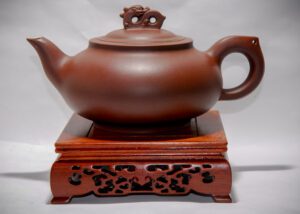

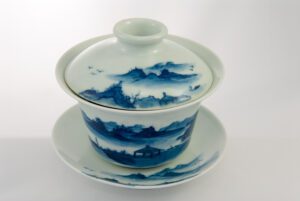

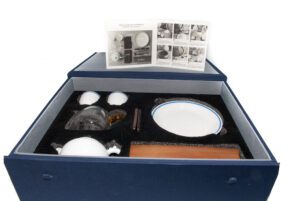
 You can use many different types of vessels to make tea. With a few caveats, the vessel matters less than the water temperature, water source, and steeping time.
You can use many different types of vessels to make tea. With a few caveats, the vessel matters less than the water temperature, water source, and steeping time.One caveat relates to tea brewed in Chinese Yixing pottery, which have been used for thousands of years to brew tea in China. They are a porous type of clay, which will absorb the flavor of a type of tea. The photo is of two of the Yixing teapots I have in my collection. Usually, you need several Yixing teapots, because you will want to use one teaport with each type of tea. I have one for Puer, one for Black tea, one for Dian Hong, and a smaller one I use with Yellow tea. We will post a video and some advice on how to season an Yixing teapot, if you are fortunate enough to procure them.
Old Yixing tea pots command a huge price, because they get better with age. These beautiful and flavorful teapots are considered heirlooms and will be passed down from one generation to the next.
The Japanese use a small teapot with a handle called a Kyusu. I have several in my collection and often use them with Japanese green tea. The clever handle design makes it easy to pour without burning your fingers. The photo is typical of a Kyusu and I’ll snap a few photos of mine shortly.
For white and green tea, we recommend a porcelain cup with lid and saucer. In Mandarin, these are called gaiwan. The photo is of my go-to gaiwan. It is handmade by a famous gaiwan maker and I purchased in Beijing on one of my many visits.
Naturally, there are lots of people who use tea balls or strainers. These work fine too. You will need to adjust the quantity of your tea to fit the size of your ball or cup. For example, for our 2012 White Peony Tea, we would recommend you use 1/4 (one quarter) to 1/5 (one fifth) of the packet if you are using a tea ball. My Mom has an Yixing teapot (a gift from her son) but she often makes our white tea using a tea ball. She’ll get about 5 tea balls out of one packet with 3-4 cups per ball throughout the day with the first steep being shorter at about 1 minute, assuming you let it sit and don’t bounce it up and down. Gradually increase the steep time for subsequent steeping.
Ultimately, we want to make it easy and stress free for tea drinkers. Thus, Bamboo Mist Tea, LLC sells a beautiful porcelain Chinese tea kit on Amazon which has everything you’ll need! There are even directions and all the utensils you’ll need.
How long should I steep the first and subsequent steeps?
STEEPING TIMES
Steeping times are more art than science. While we have provided some guidelines in the table below, the difference between us and Chinese Tea Masters is the art of bringing out the most flavor and aroma from the tea. The broad formula is tea type + quantity of tea + water type + quantity of water + water temperature + length of steeping time + material of steeping vessel = flavor and aroma of tea. This may seem scientific, but the art comes in how you combine these variables.
One hint on the length of time to steep is to monitor the color of the tea. You will fairly quickly get a feel for whether it has steeped long enough or too long by the color produced. Thus, if I let the first batch I pour into a glass holding container is too dark for the tea type, I will reduce the steeping type of the second batch in the gaiwan. When I blend it in the holding container with the tea I just made, I’ll get something closer to what I wanted to achieve. The converse is also true.
Again, speaking in generalities, you will want to steep tea a shorter time to start and to gradually increase the time. For some teas like Puer or Japanese green tea, the second steeping might be shorter than the first, before increasing it from the third steeping on. I do this because the tea seems to really open up on the second steeping and is easy to get it too strong, if you aren’t careful. With our Bamboo Mist Tea LLC 2012 White Peony Tea you would want to start with a 20-second steep, then gradually increase the steeping time to 3 minutes. As we launch new teas, we will post the steeping times here. Don’t be afraid to experiment to find what you like.
If you have steeped our 2012 White Peony tea to the point of exhaustion, we can offer one unique tip. Place the tea in a vessel and boil the water. I like to use a pot on the stove. I let the tea get to a good boil, then let it steep with a low boil. There is no set time you need to let it boil. Leaving it for 20-30 minutes is fine. A wonderful grassy white tea smell will permeate the room. Also, you can strain and drink the tea which will have a much different character and taste than the tea you just consumed. My Chinese friends consider this brew medicine. They believe if you have a cold and drink this boiled white tea broth before you go to bed, you’ll wake up feeling better!
How much tea do I use?
QUANTITY OF TEA
The quantity of tea you use will depend on your preference and size of your steeping vessel. It is definitely another area of potential stress, so relax and experiment with what works for you.
The goal is to maximize tea flavor and aroma while avoiding bitterness or an astringent harshness caused by tea tannins. Personally, my Chinese friends and I no longer precisely measure the amounts. We know for the type of tea, the vessel we intend to steep it in, how much tea we want to make, and our palate preference, approximately how much tea to use. The table below covers typical quantities, steeping times, and preferred steeping vessel. The quantities are based on the ideal vessel. Thus, if making a white tea in a normal-sized gaiwan, add more tea quantity that a green tea in the same vessel.
The Steeping Times may appear to be a broad range. They reflect
For our 2012 White Peony tea, we tried to make it easier by putting .25 ounces in a packet. We believe this is about right for steeping in a gaiwan (Chinese steeping vessel) and of a tea of this quality, it should yield at least 100 ounces (3L) of tea.
For our Puer tea cakes, you can break off a small piece and get 10 cups (6 ounce) of tea. The yield is in part due to the quality of the tea. I have had other Puer teas where after a few steepings it starts to lose its complexity and aroma. Not the ones we sell at Bamboo Mist Tea, LLC. My friend, Xiaoping, who is an expert in Puer teas, has really outdone himself to procure Puer teas of exceptional quality. I dare you to have a blind taste test with your tea connoisseur friends of our Puer teas against any others at any price point.
TEA (Loose Leaf) | QUANTITY (tsp-Tbs) | QUANTITY (Weight) | STEEPING TIME (sec) | IDEAL MATERIAL | IDEAL VESSEL |
|---|---|---|---|---|---|
Black | 1-2 Tbs | .18 to .35 oz (5-10g) Ideal: .28 oz (8g) | 30 to 180 | Clay Porcelain | Yixing teapot Gaiwan |
Dian Hong (Yunan Black) | 1-2 Tbs | .18 to .35 oz (5-10g) Ideal: .28 oz (8g) | 20 to 120 | Clay | Yixing teapot |
Green (Japanese) | 2 tsp | .175 oz (5g) | 60-120 | Clay Earthenware | Kyusu (Japanese) |
Green (Chinese) | 1-2 tsp | .11 to .175 oz (3-5g) Ideal: .175 oz (5g) | 60-120 | Porcelain | Gaiwan (Chinese) |
Matcha | 1 tsp | 60 | Earthenware | Matcha bowl | |
Puer - Raw (Sheng) - 10+ years | 1-2 tsp | .11 to .175 oz (3-5g) Ideal: .175 oz (5g) | 60-180 | Clay | Yixing teapot |
Puer - Raw (Sheng) - <10 years | 1-2 tsp | .11 to .175 oz (3-5g) Ideal: .175 oz (5g) | 60-120 | Clay Porcelain | Yixing teapot Gaiwan |
Puer - Ripe (Shou) | 1 tsp | .03 to .11 (1-3g) Ideal: .175 oz (5g) | 30-180 | Clay | Yixing Teapot |
White - aged 5+ years | 1-2 Tbs | .18 to .35 oz (5-10g) Ideal: .25 oz (7g) | 30-180 | Porcelain | Gaiwan |
White - young <5 years | 1-2 Tbs | .18 to .35 oz (5-10g) Ideal: .25 oz (7g) | 30-120 | Porcelain | Gaiwan |
Wulong (Oolong) | 2-3 tsp | .11 to .175 oz (3-5g) Ideal: .14 oz (4g) | 60-120 | Clay Porcelain | Yixing Gaiwan |
Yellow | 2-3 tsp | .11 to .175 oz (3-5g) Ideal: .11 (3g) | 60-120 | Porcelain | Gaiwan |

